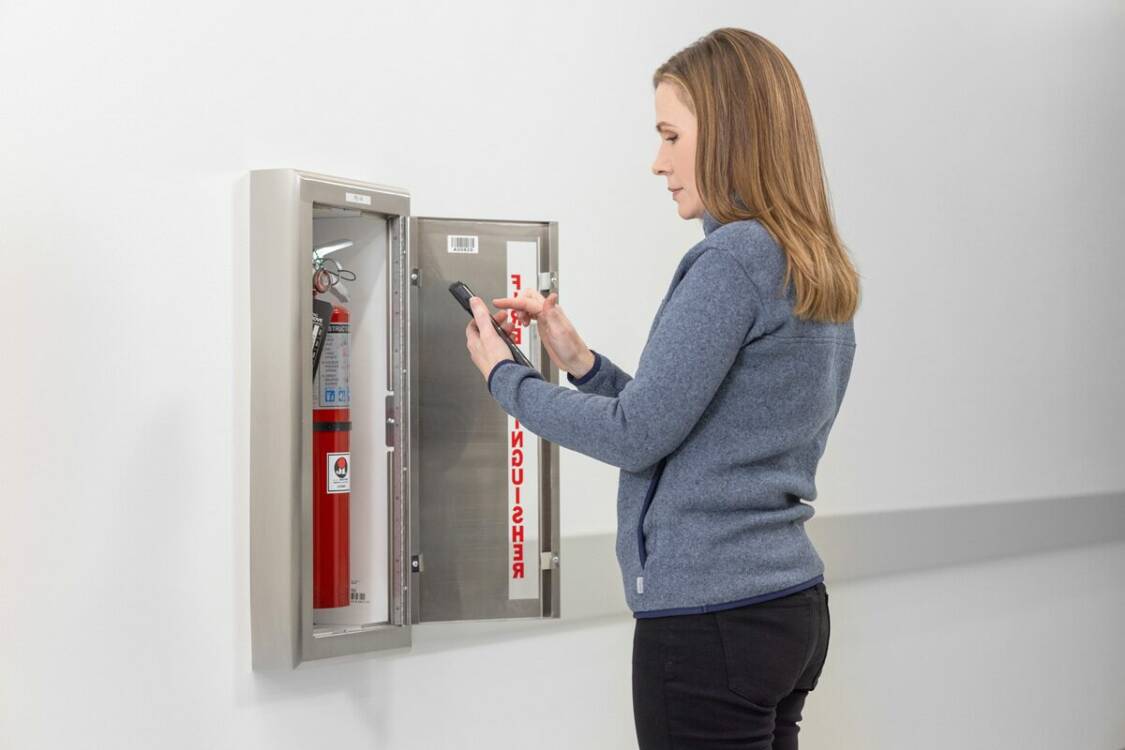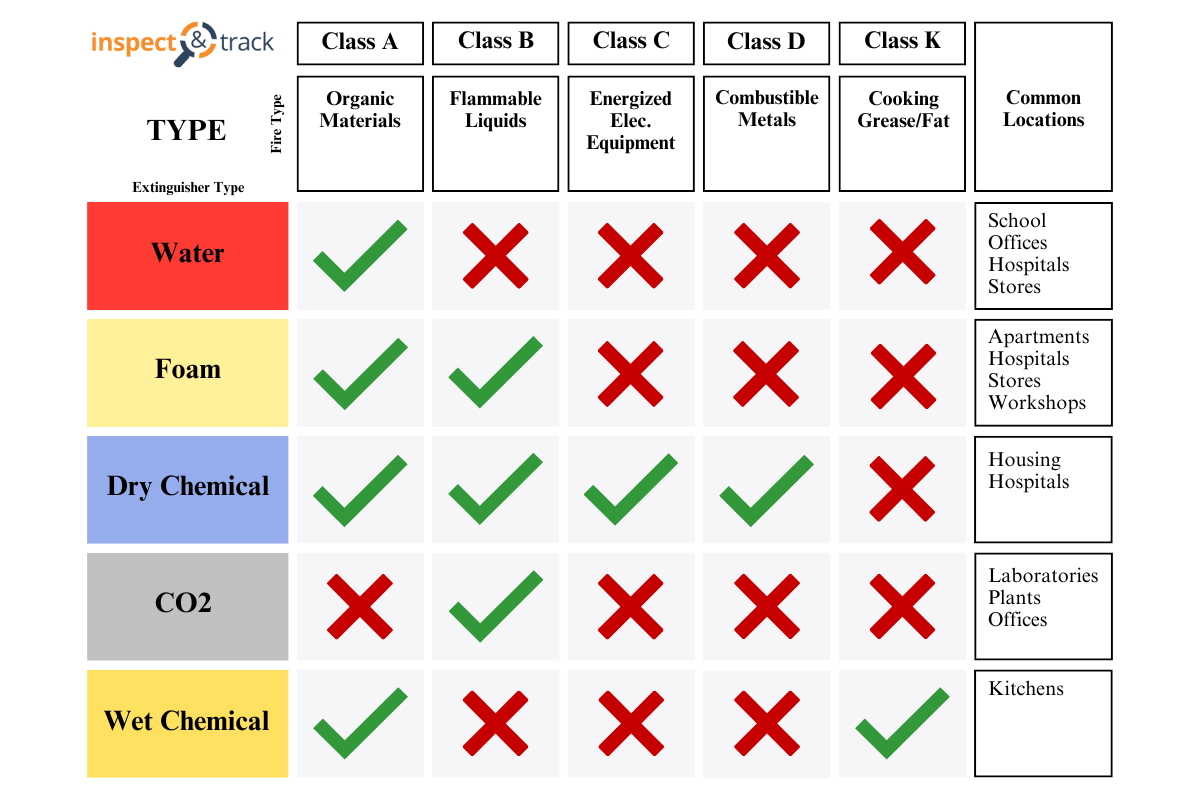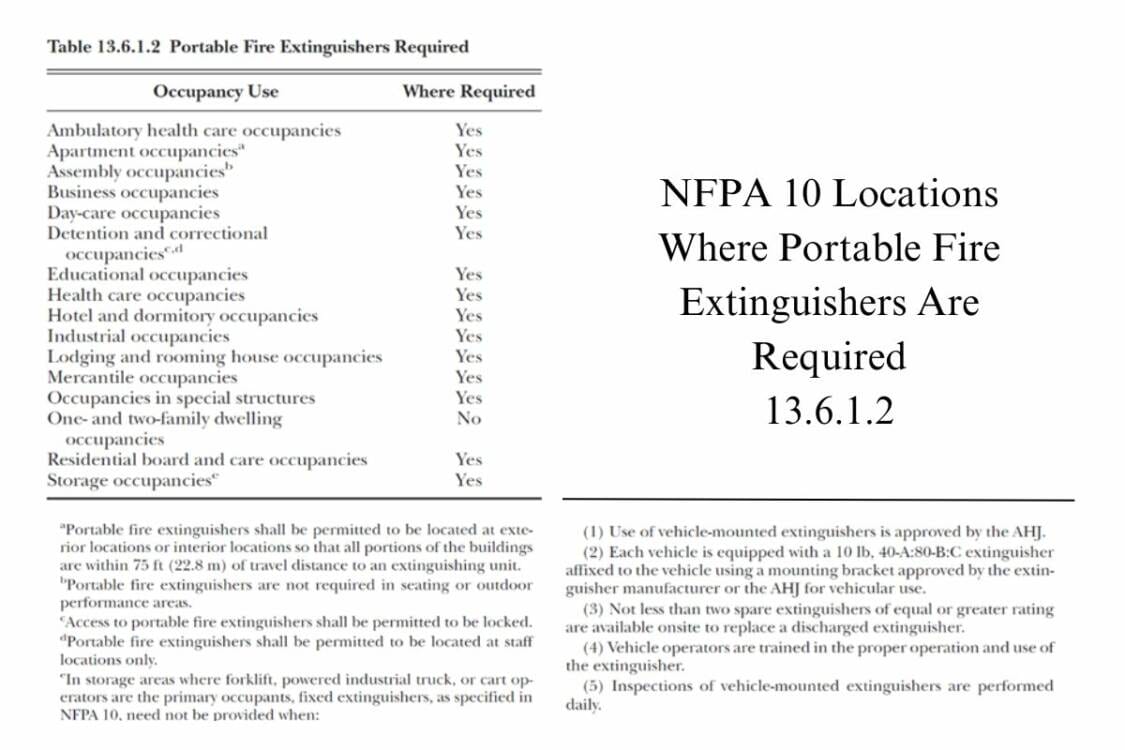Not sure if your building needs fire extinguishers? This article highlights the types of occupancies that require portable fire extinguishers along with the extinguisher classification that’s needed.
Unfortunately, fire extinguishers are often viewed as little more than a safety “accessory” or “background actor” in the world of fighting fires. And while fire extinguishers might not have the same heroic zeal that a band of firefighters does, they can be real life saving agents in a disaster. In fact, reports show that when a fire extinguisher is used on a fire in the US, 75% of the time, the fire department doesn’t need to attend the incident. (EnGauge Inc.) This stat highlights that extinguishers aren’t just toys. They are effective tools for fire safety.
However, a key part of what makes fire extinguishers effective is placing the correct extinguisher type in a location where it belongs and is accessible. As a result, it is vital, for both safety and compliance, to understand the types of locations that require portable fire extinguishers and the agents each extinguisher classification is designed to handle.
Whether you’re opening a new facility, moving locations, or simply reviewing compliance requirements, this is valuable information to know. Follow along as we discuss the importance of fire extinguishers, the locations that require them, and which classifications should be used in each setting.


The Purpose of Fire Extinguishers
The primary purpose of portable fire extinguishers is to serve as the first line of defense against small fires.
This safety equipment can be used to stifle fires and prevent damage, further spreading of the fire, or loss of life. They are designed for quick deployment which helps to suppress flames before emergency responders arrive. Not only that, but they also help with meeting compliance requirements and reducing the likelihood of any safety-related financial repercussions.
By strategically placing the correct type of extinguisher in various environments, businesses, homes, and institutions can mitigate fire risks and enhance overall safety.
Fire Extinguisher Classifications
Portable fire extinguishers are classified based on the type of fire that they are best designed to fight. The most common types include:
- Class A – Solid materials such as wood, metal, cloth, paper, plastics, and rubber
- Class B – Flammable liquids including oil, gasoline, paint, and grease
- Class C – Energized electrical equipment
- Class D – Electrical equipment including outlets and appliances (combustible metals)
- Class K – Cooking grease or fat (from oil, animal, and vegetable products)
By understanding these different classifications, you can select and place the fire extinguisher that best fits your area and its potential risk factors.

Fire Extinguisher Locations to Know
Now, let’s move on to the locations that require fire extinguishers. NFPA 10 offers clarification on which buildings and occupancy types should house extinguishers. As you can see from the table, it is generally accepted that all public and workplace buildings offer some level of fire extinguisher protection. Pretty much the only spaces that are not required to include extinguishers are personally owned housing units.

But what types of extinguishers are best for each of these locations? Here is a breakdown of common spaces and the recommended extinguisher types to go with each.
Next Steps – Fire Extinguisher Placement
Now that you understand fire extinguisher locations and classifications, you are ready for the next steps: instillation and management. These two may sound intimidating, but don’t worry. We have a fire extinguisher placement guide that provides a brief overview of how and where to position your extinguishers – including height, distance, and other requirements. Reading over this article will help you feel confident in your abilities to install your extinguishers in a way that is safety-focused and compliant.
As far as management goes, it may seem overwhelming to get started, but we have resources for this too. This article details the basics of fire extinguisher inspection, testing, and maintenance, which is your lifeline for staying on top of everything.
Software Makes Management Simple
Keeping pace with different inspections schedules and maintenance tasks can be tough, no matter how organized you are. Software can help take the guesswork out of fire safety, while putting more time and money back into your pockets. We offer fire inspection software that is specifically designed to help you properly place your fire extinguishers and manage them.
| Feature/Benefit | Description |
|---|---|
| Location Tracking | Always know where your extinguishers are. |
| Build Logical Inspection Routes | Maximize your time by conducting maintenance along routes that make sense. |
| Time and Money Savings | Reduce costs through efficient inventory management. |
| Real Time Visibility & Updates | The software updates without wifi so you can get the latest info on demand. |
| Reporting on the Go | Use a handheld device to document your tasks as you complete them. |
| Automated Scheduling/Alerts | Get notified when you have upcoming inspections or maintenance tasks. |
| Compliance Support | Notifications for upcoming tasks along with a detailed audit trail help prove compliance and keep it top of mind. |
These are just some of the elements that make our software the go-to option. Want to learn more? If so, request a demo! Our team of specialists are happy to set up a meeting to help you determine if InspectNTrack software is right for your company’s needs. We believe in the power of our product to change the way safety is approached in the workplace and want to answer any questions you have.
Conclusion
Proper placement of fire extinguishers is essential for effective fire response. By understanding the different classifications and matching them to the right locations, businesses, institutions, and residences can enhance fire safety and ensure compliance with NFPA 10. Implementing a structured fire extinguisher inventory and inspection system helps maintain readiness and compliance across all required areas.

